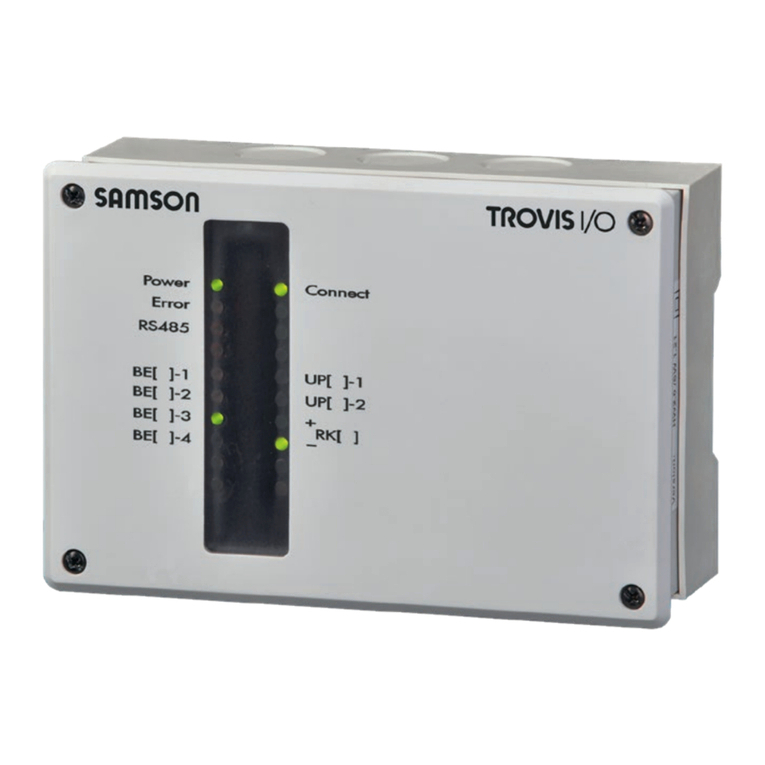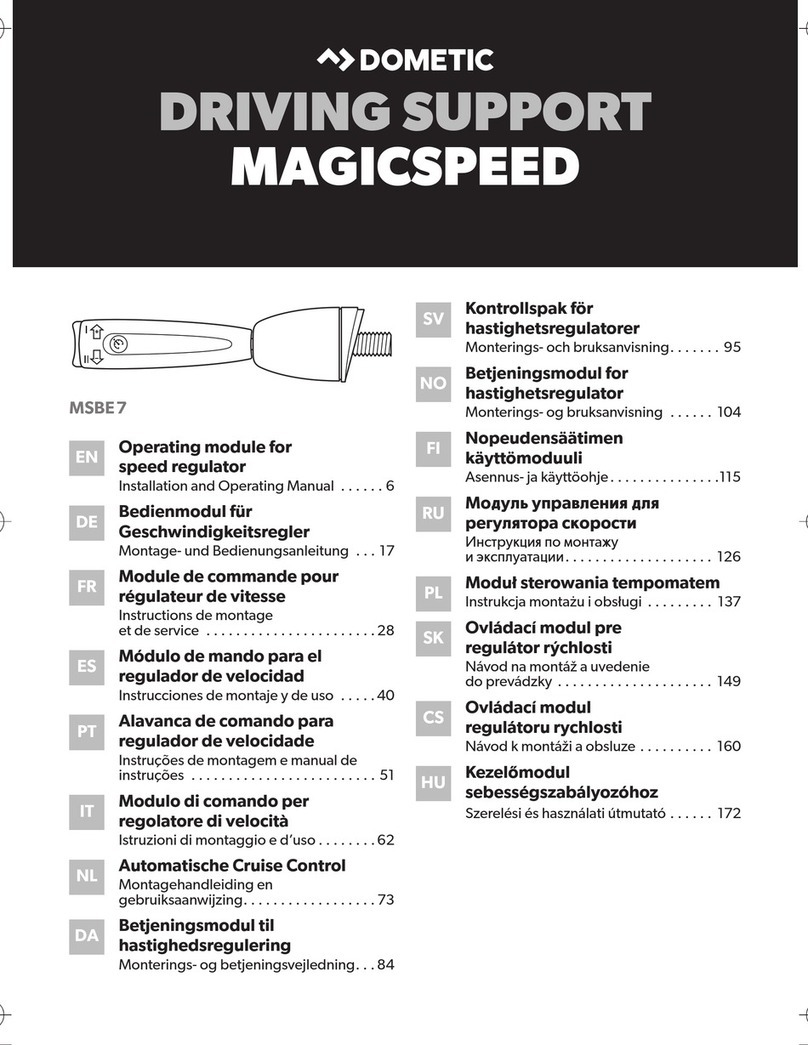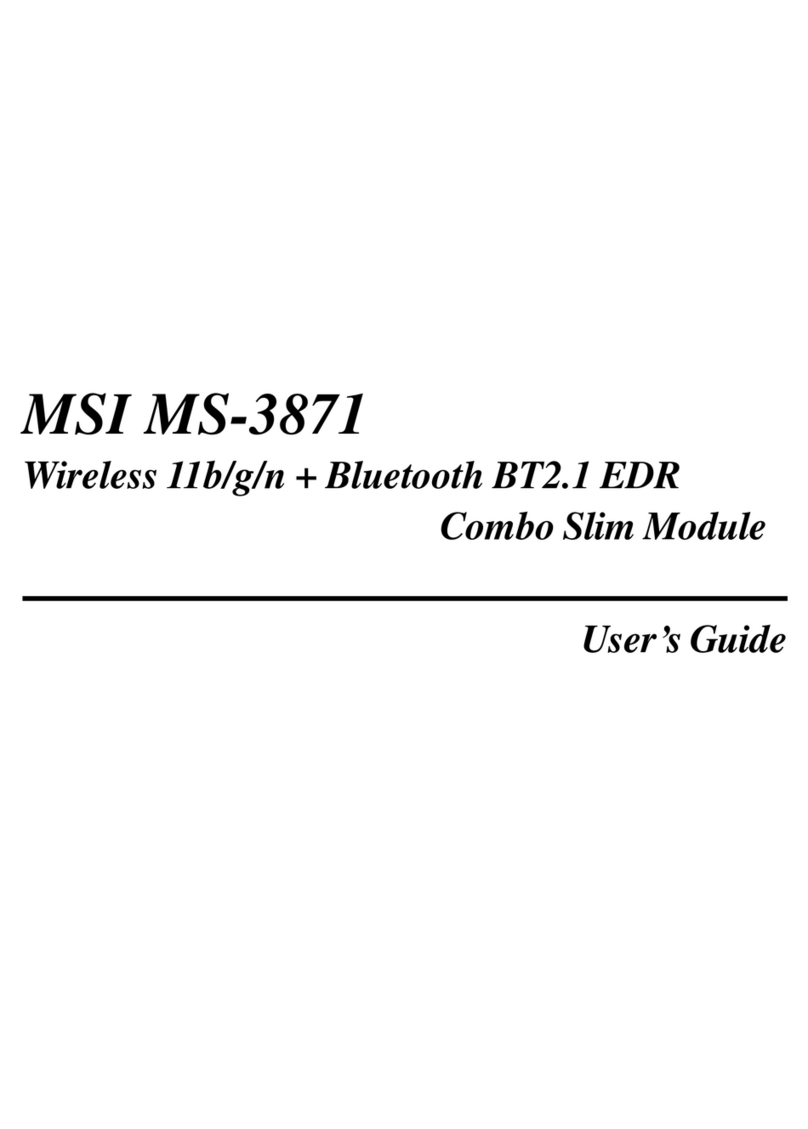Bluewin ACB225 User manual

Function – Installation
Electronic Speed Governor
D E
2(0)


1
Electronic Speed Governor
Function – Installation – Fault-tracing
This booklet only covers the ACB225, ACB275 and
ACD175-24 actuators and the ESD5500E control unit.
Genset applications:
Note. If the GAC system is to be used for a genset application, please contact
Hügli Tech Ltd. (Switzerland) for application assistance.
– telephone: INT +41-62 9165030
– telefax: INT +41-62 9165035
Contents
Safety precautions ......................................................................... 2
General information ....................................................................... 5
General description........................................................................ 7
Function ......................................................................................... 8
Installation...................................................................................... 11
Electromagnetic compatibility ........................................................ 12
Setting and Adjusting..................................................................... 13
Running ......................................................................................... 15
Fault-tracing................................................................................... 17

2
As a general rule all service operations must be
carried out with the engine stopped. Some work,
e.g. certain adjustments, require the engine to be
running. Approaching an engine which is running
is a safety risk. Remember that loose clothes or
long hair can fasten in rotating parts and cause
severe personal injuries. If working in proximity of
an engine which is operating, careless move-
ments or a dropped tool can result in personal in-
jury. Take care to avoid contact with hot surfaces
(exhaust pipes, Turbocharger (TC), air intake
pipe, start element etc.) and hot liquids in lines
and hoses on an engine which is running or which
has just been stopped. Reinstall all protective
parts removed during service operations before
starting the engine.
Check that the warning or information decals on
the engine are always clearly visible. Replace de-
cals that have been damaged or painted over.
Never start the engine without installing the air
cleaner (ACL). The rotating compressor in the
Turbo can cause serious personal injury. Foreign
objects entering the intake ducts can also cause
mechanical damage.
Never use start spray or similar to start the en-
gine. The start spray may cause an explosion in
the inlet manifold. Danger of personal injury.
Avoid opening the coolant filler cap when the en-
gine is hot. Steam or hot coolant can spray out as
system pressure is lost. Open the filler cap slowly
and release coolant system pressure, if the filler
cap or a drain cock/venting cock must be opened,
or if a plug or engine coolant line must be re-
moved on a hot engine. It is difficult to anticipate
in which direction steam or hot coolant can spray
out.
Hot oil can cause burns. Avoid skin contact with
hot oil. Ensure that the lubrication system is not
under pressure before commencing work on it.
Never start or operate the engine with the oil filler
cap removed, otherwise oil could be ejected.
Stop the engine and close the sea cock before
carrying out operations on the engine cooling sys-
tem.
Introduction
This Service Manual contains technical specifications,
installation instructions and wiring diagrams for the
Electronic Speed Governor.
If you do not understand or are uncertain about any op-
eration or information in this Manual, please contact
your Volvo Penta dealer for assistance.
Read the “Safety Precautions” and the “General In-
formation” carefully before starting work.
Important!
In this book and on the engine you will find the following
special warning symbols.
WARNING! Possible danger of personal injury,
damage to property or mechanical malfunction if
the instructions are not followed.
IMPORTANT! Used to attract attention to what
can cause injury, malfunction, or damage to
property.
NOTE! Used to attract attention to important informa-
tion for the simplification of work processes or
handling.
To provide a general understanding of the risks and
precautions to which attention should always be
given we have made the following list.
Plan work in advance to ensure that there is suffi-
cient space to remove components without dan-
ger of injury or damage. Plan the engine compart-
ment (and other compartments such as the bat-
tery compartment) so that all service points are
accessible. Take precautions so that you do not
come into contact with rotating components, hot
surfaces or sharp edges when servicing or in-
specting the engine. Ensure that all equipment
(pump or compressor drives for example) are
equipped with suitable safety guards.
Immobilize the engine by turning off the power
supply to the engine at the main switches so it is
impossible to start, and lock them in the OFF po-
sition before starting work. Set up a warning no-
tice at the engine control point or helm.
Safety Precautions

3
Only start the engine in a well-ventilated area. If
operating the engine in a closed area ensure that
there is exhaust ventilation leading out of the
work area to remove exhaust gases and crank-
case ventilation emissions.
Always use protective goggles where there is a
danger of pieces of metal, sparks from grinding,
acid or other chemicals being thrown into your
eyes. Your eyes are very sensitive, injury can
lead to loss of sight!
Avoid skin contact with oil. Long-term or repeated
contact with oil can remove the natural oils from
your skin. The result can be irritation, dry skin, ec-
zema and other skin problems.
Used oil is more dangerous to health than new oil.
Use protective gloves and avoid oil-soaked
clothes and rags.
Wash regularly, especially before meals. Use the
correct barrier cream to prevent dry skin and to
make cleaning your skin easier.
Most chemicals used in products (engine and
transmission oils, glycol, petrol and diesel oil) and
workshop chemicals (solvents and paints) are
hazardous to health Read the instructions on the
product packaging carefully! Always follow safety
instructions (using breathing apparatus, protective
goggles and gloves for example). Ensure that oth-
er personnel are not unwittingly exposed to haz-
ardous substances (by breathing them in for ex-
ample). Ensure that ventilation is good. Handle
used and excess chemicals according to instruc-
tions.
Be extremely careful when tracing leaks in the
fuel system and testing fuel injection nozzles. Use
protective goggles! The jet ejected from a fuel in-
jection nozzle is under very high pressure. It can
penetrate body tissue and cause serious injury
There is a danger of blood poisoning.
WARNING! Delivery pipes must not be bent,
twisted or subjected to other stress. Replace
damaged delivery pipes.
All fuels and many chemicals are inflammable.
Ensure that a naked flame or sparks cannot ignite
fuel or chemicals. Combined with air in certain ra-
tios, petrol, some solvents and hydrogen from
batteries are easily inflammable and explosive.
Smoking is prohibited! Ensure that ventilation is
good and that the necessary safety precautions
have been taken before carrying out welding or
grinding work. Always have a fire extinguisher to
hand in the workplace.
Store oil and fuel-soaked rags and fuel and oil fil-
ters safely. In certain conditions oil-soaked rags
can spontaneously ignite. Used fuel and oil filters
are environmentally dangerous waste and must
be deposited at an approved site for destruction
together with used lubricating oil, contaminated
fuel, paint remnants, solvent, degreasing agents
and waste from washing parts.
Ensure that the battery compartment is construct-
ed according to applicable safety regulations.
Never allow a naked flame or electric sparks near
the batteries. Never smoke in proximity to the bat-
teries. The batteries give off hydrogen gas during
charging which when mixed with air can form an
explosive gas - oxyhydrogen. This gas is easily
ignited and highly volatile. Incorrect connection of
the battery can cause a spark which is sufficient
to cause an explosion with resulting damage. Do
not disturb battery connections when starting the
engine (spark risk) and do not lean over batteries.
Never mix up the positive and negative battery
terminals when installing. Incorrect installation
can result in serious damage to electrical equip-
ment. Refer to wiring diagrams.
Always use protective goggles when charging and
handling batteries. The battery electrolyte con-
tains extremely corrosive sulfuric acid. If this
should come in contact with the skin, immediately
wash with soap and plenty of water. If battery acid
comes in contact with the eyes, immediately flush
with plenty of water and obtain medical assist-
ance without delay.
Turn the engine off and switch off power at the
main switches before carrying out work on the
electrical system.
Clutch adjustments, where a clutch is fitted, must
be carried out with the engine turned off.
Use the lifting eyes mounted on the engine/re-
verse gear when lifting the drive unit. Always
check that the lifting equipment used is in good
condition and has the load capacity to lift the en-
gine (engine weight including reverse gear and
any extra equipment installed).

4
To ensure safe handling and to avoid damaging
engine components on top of the engine, use a
lifting beam to raise the engine. All chains and ca-
bles should run parallel to each other and as per-
pendicular as possible in relation to the top of the
engine.
If extra equipment is installed on the engine alter-
ing its center of gravity, a special lifting device is
required to achieve the correct balance for safe
handling.
Never carry out work on an engine suspended on
a hoist.
Never handle heavy components alone, even
where secure lifting equipment such as secured
blocks are being used. Even where lifting equip-
ment is being used it is best to carry out the work
with two people; one to operate the lifting equip-
ment and the other to ensure that components
are not trapped and damaged when being lifted.
When working on-board ensure that there is suffi-
cient space to remove components without dan-
ger of injury or damage.
WARNING! The components in the electrical sys-
tem and in the fuel system on Volvo Penta prod-
ucts are designed and manufactured to minimize
the risk of fire and explosion.
The engine must not be run in areas where there
are explosive materials.
Always use fuels recommended by Volvo Penta.
Refer to the Instruction Book. The use of lower
quality fuels can damage the engine. On a diesel
engine poor quality fuel can cause the control rod
to seize and the engine to overrev with the result-
ing risk of damage to the engine and personal in-
jury. Poor fuel quality can also lead to higher
maintenance costs.
Observe the following rules when cleaning with
high-pressure water jets. Never direct the water
jet at seals, rubber hoses or electrical compo-
nents. Never use a high pressure jet when wash-
ing the engine.

5
Certificated engines
For service and repair of an engine certificated for
any area where exhaust emissions are regulated by
law, the following is important:
Certification means that an engine type is inspected and
approved by the authorities. The engine manufacturer
guarantees that all engines manufactured of that type
correspond to the certified engine.
This places special requirements on maintenance
and service as follows:
●The maintenance and service intervals recommend-
ed by Volvo Penta must be observed.
●Only genuine Volvo Penta replacement parts may be
used.
●The service of injection pumps and injectors or pump
settings must always be carried out by an authorized
Volvo Penta workshop.
●The engine must not be modified in any way except
with accessories and service kits approved by Volvo
Penta.
●No modifications to the exhaust pipes and air supply
ducts for the engine may be undertaken.
●Seals may only be broken by authorized personnel.
Otherwise the general instructions contained in the In-
struction Manual concerning operation, service and
maintenance must be followed.
IMPORTANT! Late or inadequate maintenance/
service or the use of spare parts other than genu-
ine Volvo Penta original spare parts will invalidate
AB Volvo Penta’s responsibility for the engine
specification being in accordance with the certifi-
cated variant.
Volvo Penta accepts no responsibility or liability
for any damage or costs arising due to the above.
General Information
General
This Manual is primarily intended for use by expert pro-
fessionals. Persons using this book are assumed to
have a basic knowledge and be able to carry out related
mechanical and electrical work.
The mechanic is responsible for ensuring that installa-
tion is carried out correctly, that only approved materials
and equipment is used, that function tests are carried
out after installation, and that the installation meets all
applicable regulations.
Volvo Penta is continuously developing their products.
We therefore reserve the right to make changes. All the
information contained in this book is based on product
data available at the time of going to print. Any impor-
tant modifications to the product or changes to installa-
tion methods after the date of going to press will be noti-
fied in Service Bulletins.
Plan installation carefully
Plan the installation of the engine and its components
carefully in advance. Always ensure that the correct
drawings, Wiring Diagrams and data are used, and that
all installation drawings, templates, technical and other
necessary data are available before starting work. This
will prevent problems in the planning phase and during
installation.
Plan the engine compartment so that regular service
and maintenance can be carried out and so that compo-
nents can be replaced easily. Compare the service liter-
ature for the engine with the drawings so that there is
enough room to service the engine.
It is of the greatest importance that no dirt or foreign
particles get into the fuel system, cooling system or in-
take system when installing the engine. This could lead
to malfunction or serious damage. Blow clean all pipes
and hoses with compressed air before connecting them
to the engine. Remove the engine plugs only when con-
necting the engine to external systems.

6
Joint responsibility
Each engine consists of many connected systems and
components. If one component deviates from the tech-
nical specifications this can have dramatic consequenc-
es on the environmental impact of the engine. It is
therefore vital that systems that can be adjusted are ad-
justed properly and that Volvo Penta Genuine Parts are
used.
Certain systems (components in the fuel system for ex-
ample) may require specialist expertise and test equip-
ment. Some components are sealed at the factory for
environmental reasons. No work should be carried out
on sealed components except by authorized personnel.
Bear in mind that most chemicals are harmful to the en-
vironment if used incorrectly. Volvo Penta recommends
the use of biodegradable degreasing agents for clean-
ing engine components, unless otherwise stated in a
workshop manual. Take special care that oil and waste
is taken for destruction and is not accidentally pumped
into the environment.
©1999 AB VOLVO PENTA
All rights to changes or modifications reserved.
Printed on environmentally-friendly paper

7
General description
The difference value is converted into a signal to an
electro-magnet (actuator) which adjusts the injection
pump’s control rod to increase or decrease the injected
fuel amount.
The following text describes the components making up
the system, and their function, separately.
Certain engines have injection pumps with RQ gover-
nors fitted as speed limiters. In these cases the actuator
is fitted on a separate bracket. The sender and the elec-
tronic overspeed protection is omitted in these cases,
and the stop solenoid/fuel shut off valve is only used to
stop the engine normally.
The electronic governor system is a control unit which
governs the engine speed. Its task is to:
– maintain the idling speed at an adjustable set point
– maintain the engine’s operating speed at an adjusta-
ble set point despite varying loads.
Unlike the mechanical governor, the electronic governor
does not have governor weights. The speed is control-
led by the control unit (1, fig 1) “sensing” the difference
between the set speed and the actual speed.
WARNING!
An overspeed protection MUST always be fitted besides
the electronic governor to prevent bodily injury or material
damage if the engine should run out of control.
Fig. 1. Engine fitted with an electronic governor (system diagram)
1. Control unit 5.1 Stop solenoid
2. Engine speed pickup 5.2 Fuel shut-off valve
3. Actuator 6. Batteries
4. Engine speed pickup for overspeed protection

8
Engine speed pickup
The engine speed pickup is a variable reluctance sen-
sor fitted in the flywheel housing directly above the fly-
wheel ring gear. As the teeth of the ring gear pass un-
der the electromagnet an alternating current is in-
duced (one cycle per tooth).
The pulse's voltage is between 1V AC to 30V (AC.
RMS.)
The pickup's threads is 5/8"–18 UNF-2A.
Function
Control unit
The electronic control Unit (fig 3) compares the incom-
ing signals with the pre-set values, and a correcting sig-
nal or an unchanged signal is transmitted to the actua-
tor.
The control unit has a number of adjustment possibili-
ties which are described below. Adjustments can be
made after first removing the round rubber plugs from
the control unit.
1. Adjusting the idling speed (marked “IDLE”), (4, fig.
3) is done with a single turn potentiometer. The
idling speed can be adjusted with a jumper between
the terminals “G” and “M” installed.
The adjustment range is 1200–4100 Hz below the
frequency for the set engine speed. Turning the po-
tentiometer clockwise will increase the idling
speed.
2. Adjusting the operating speed (“SPEED”), (1, fig.
3) is done with a 22 turn potentiometer.
The frequency range is 1000–7500 Hz. Turning the
potentiometer clockwise will increase the engine
speed.
The frequency from the magnetic pickup (engine
speed pickup) is dependent on the number of teeth
on the flywheel ring gear and the desired engine
speed, i.e. the engine speed in r/s (revs per second)
multiplied by the number of teeth on the ring gear.
Engine No. of teeth
6 Ltr. engines .............................................. 140
7 Ltr. engines (standard/optional*) ............. 140/153*
10/12 Ltr. engines ....................................... 156
16 Ltr. engines ............................................ 153
*Flywheel housing with connection acc. to SAE 1.
Fig. 2. Location of engine speed
pickup
1. Engine speed pickup
2. Flywheel ring gear
Example: Engine TWD1630 set on 1500 rpm.
(25 r/s): 25 x 153 = 3825 Hz.
3. Governor sensitivity. The governor’s sensitivity is
adjusted by a single turn potentiometer (“GAIN”), (1,
fig. 3). A small change of frequency can be noticed
when adjusting the “GAIN” control. This can be ad-
justed by the “SPEED” potentiometer (3).
4. Stability control. The governor’s time constant is
adjusted by the single turn potentiometer (“STABILI-
TY”), (7, fig. 3).
The time constant is the time required by the engine
to return to the set operating speed after there has
been a change in load.
5. Droop. The droop control (4, fig. 3), marked
“DROOP” is working when terminals “K” and ”L” are
connected. The adjustment range is 1–5%. Turning
clockwise will increase the value.
With a jumper between terminals “G” and “H”, an in-
creased droop can be obtained.
6. Starting fuel adjustment. Turning the
“STARTING FUEL” adjustment clockwise will in-
crease the amount of fuel delivered to the engine
during cranking. With the adjustment full counter-
clockwise, the fuel amount will be very low or zero
depending on the actuator linkage. With the adjust-
ment full clockwise, starting fuel is unlimited and
the actuator will move to 100% fuel during cranking.
7. Speed Ramping Adjustment. Turning the
“SPEED RAMPING” adjustment clockwise will slow
the acceleration of the engine speed. With the ad-
justment full clockwise, the acceleration can be as
long as 20 seconds depending on the speed range
selected. With the adjustment full counter-clock-
wise, the ramping will be effectively eliminated.
Fig. 3. Control unit ESD5500E with the rubber plugs removed.
1. Gain control 5. Starting fuel adjustment
2. Idle adjustment 6. Speed ramping adjust-
3. Operating speed, setting ment
4. Droop control 7. Stability control

9
Speed Control Unit ESD5500E
Introduction
The ESD5500E Series speed contol unit includes all of
the features of the ESD5131. In addition, it includes a
feature that controls the fuel delivered to the engine
during the starting process. By eliminating excess fuel,
less smoke is produced resulting in environmental ben-
efits. It has also been improved to reach higher EMC
immunity. Replacement of older speed controls on ex-
isting engines is a simple and environmentally responsi-
ble process.
The only difference between the installation of an ESD
5500E and that of the ESD5100 Series is the Idle selec-
tor switch connections. The ESD5500E uses Terminals
“M” and “G” while the ESD5100 used Terminals “M”
and “L”.
Adjustment description
The performance adjustments of the ESD5500E are set
exactly like those of the ESD5100 Series. The
STARTING FUEL and SPEED RAMPING adjustments
control the start up characteristics of the engine. With
proper adjustment, a smooth start, with minimum ex-
cess fuel, can greatly reduce excessive smoke during
engine starting.
Starting fuel adjustment
Turning the STARTING FUEL adjustment clockwise
will increase the amount of fuel delivered to the engine
during cranking. With the adjustment full counter-
clockwise, the fuel amount will be very low or zero de-
pending on the actuator linkage. With the adjustment
full clockwise, starting fuel is unlimited and the actua-
tor will move to 100% fuel during cranking.
Speed Ramping Adjustment
Turning the SPEED RAMPING adjustment clockwise
will slow the acceleration of the engine speed. With the
adjustment full clockwise, the acceleration can be as
long as 20 seconds depending on the speed range se-
lected. With the adjustment full counter-clockwise, the
ramping will be effectively eliminated.
Adjustments
Preset the ESD5500E as follows:
– STARTING FUEL: Full clockwise (Maximum fuel)
– SPEED RAMPING: Full counter-clockwise (Fastest)
1. Start the engine and adjust the Speed, Gain, Stabili-
ty and Dead Time Compensation (switches “C1” and
“C2”) as described on pages 15–16. The fuel deliv-
ery should not be restricted at this time.
2. Place the engine in idle by connecting Terminals “M”
and “G”.
3. Adjust the IDLE speed for as low speed setting as
the application allows.
4. Adjust the STARTING FUEL counter-clockwise
until the engine speed begins to fall. Increase the
STARTING FUEL slightly so that the idle speed is
returned to the desired level.
5. Stop the engine.
One of two methods of operation for the ESD5500E
may now be selected.
Method 1 – Start the engine and accelerate directly to
the operating speed (Gen sets, etc.).
or
Method 2 – Start the engine and control at an idle
speed for a period of time prior to accelerating to the
operating speed. This method separates the starting
process from the acceleration process so that each may
be optimized for the lowest smoke emmisions.
Method 1
Remove the connection between Terminals “M” and
“G”. Start the engine and adjust the SPEED RAMPING
for the least smoke on acceleration from idle to rated
speed. If the starting smoke is excessive, the
STARTING FUEL may need to be adjusted slightly
counter-clockwise. If the starting time is to slow, the
STARTING FUEL may need to be adjusted slightly
clockwise.
Method 2
Replace the connection between Terminals “M” and “G”
with a switch, usually an oil pressure switch. Start the
engine. If the starting smoke is excessive, the STAR-
TING FUEL may need to be adjusted slightly counter-
clockwise. If the starting time is too long, the
STARTING FUEL may need to be adjusted slightly
clockwise.
When the switch opens, adjust the SPEED RAMPING
for the least amount of smoke when accelerating from
idle speed to rated speed.

10
Fig. 5. Electronic overspeed protection
A. Version 1 C, D. Adjuster screws for setting
B. Version 2 the shut-down point*
*One turn of the adjuster screw “C” corresponds to approx. 70 rpm
for the 16 liter range (or approx. 85 rpm for other engines that
have later been equipped with the overspeed protection).
The adjustment sector (270°) for screw “D” corresponds to appr.
1560–2700 rpm.
Fig. 4. Engine with electronic overspeed protection
1. Engine speed pickup 4. Fuel shut-off valve
2. Stop solenoid* 5. Overspeed protection
3. Relay for stop solenoid*
* Engines fitted with the ACD175-24 actuator have no stop
solenoid. Instead, a fuel shut-off valve (4) is fitted.
ACB225
ACB275
ACD175-24
Overspeed protection
As an extra safety protection against overspeed and
consequent damage, a separate overspeed protection
must be included in the electronic governor system.
The engine speed pickup for the overspeed protection
is fitted in the timing gear casing. The overspeed pro-
tection should be set so that the operating speed can
be exceeded by approx. 15%. The adjustment is done
using the trim potentiometer (C/D, fig 5).
At the pre-set shut-down point, the stop solenoid (if fit-
ted)* and the control unit should be de-energized simul-
taneously, moving the injection pump’s stop lever to the
zero fuel position thus stopping the engine.
If the engine is fitted with a RQ governor, then this will
function as an overspeed protection. The RQ governor
limits the engine speed mechanically.
An overspeed protection must always be installed
for safety reasons.
*Note. A stop solenoid is not required for the ACB275 and
ACD175-24 actuators.
Fig. 6. Engine with mechanical overspeed protection
1. RQ governor 2. Separately installed actuator
Actuator
The actuator is an electromagnet. The actuator, type
ACB275 or ACD175-24, is fitted to the rear of the injec-
tion pump and replaces the usual mechanical governor.
On certain injection pumps there is an RQ governor fit-
ted as an overspeed protection. For these cases, an ac-
tuator type ACB225 is fitted separately.
The control signals, which the control unit transmits to
the actuator, are transferred to the injection pump’s fuel
control rod via a linkage system.
The actuator converts the control signals from the
control unit to controlling forces.
Fig. 7. Actuators, type ACB225, ACB275 and ACD175-24
1. Connection to the control unit
2. Inspection cover

11
Installation
24V
Power supply
The power supply can be either 12V or 24V DC for the
actuators ACB225 and ACB275. For the ACD175-24
actuator the power supply is 24V DC.
No ground circuit is required as the circuits are isolated
from the control unit’s casing.
Max. current at 24V is approx. 4A, and at 12V approx.
8A. The control unit should be fused with a 15A for
12V, and 8A for 24V, fast typed fuse.
Note! A battery charger must not be connected so
that overvoltage occurs in the system.
Location of the control unit
The control unit should be placed in a protected place
which is not subject to extreme vibrations or tempera-
tures. The control unit functions well at temperatures
between –40°C to +85°C (–40° to +185°F).
Wiring
The wiring is shown in the wiring diagram, fig 8.
Note that all components are connected to the control
unit (two cables each from the actuator, pickup and
battery).
To
control unit
Fig. 9. Connecting the actuator for 12V system voltage.
Note. Also connect a jumper between terminals “G” and “H” on
the control unit.
Jumper B to C
A & D connected to the control unit
Fig. 8. Connecting the stop solenoid or fuel valve, live during operation, 24V system.
Note. The later version stop solenoid has a built-in transient protection. Therefore, only a separate transient
protection (7) for the control unit is required.
1. Control unit 5. Fuse 15A (fast) 9. Engine speed pickup for overspeed protection
2. Actuator 6. Main switch 10. Engine speed switch (overspeed protection)
3. Pickup 7. Stop solenoid (not for ACD175) 11. Relay
4. External speed trim (5 kΩ) 8. Fuel shut off valve 12. Battery: 12V or 24V
12V* Jumper A to C
Jumper B to D
*Not applicable for ACD175-24
Fig. 10. Connecting the actuator for 24V system voltage
To
control unit

12
Wiring
The 6 basic wires should have the following min. crossection in mm2:
4. The battery minus connection to terminal “E“ must
also be additionally jumpered to the control unit
casing. For isolated ground systems use a 0.01 µF
capacitor, The capacitor should be a good quality
ceramic type that withstand the required isolation
voltage (500V – 1kV).
5. Shielded cable for the actuator is recommended to
minimise the actuator’s slight movement during fast
high voltage transients.The installer’s choice of not
using shielded cable may cause the actuator to
move more than slightly during these transients.
However, no failures should be experienced.
6. The installer must refer to the wiring diagram below.
In order to be in compliance with the EMC directives,
the installer is obligated to install the equipment in strict
accordance with the following special instructions and
guidelines:
1. The speed control unit must be mounted against a
metal ground plane with four bolts which make posi-
tive electrical connection between the control unit
casing and the back plane or a backing plate.
2. The magnetic pickup must be connected to the con-
trol unit using shielded cable as shown in the wiring
diagram, fig. 11.
3. All shielded cable connections to the control unit
must be connected to the casing.
Fig. 11
12V 24V
Terminal up to 6 Meters over 6 Meters up to 6 Meters over 6 Meters
(19.7 feet) (19.7 feet) (19.7 feet) (19.7 feet)
A – B to actuator 2.5 4.0 1.5 2.5
E – F to battery 2.5 4.0 1.5 2.5
C – D to speed sensor Use shielded cable 2 x 0.75 or 2 x 1.0 mm2.
Connect shield to ground terminal on control unit. If shielded cable is not available,
then twist the two leads all the way.
Other terminals Conduct only milliamps, hence 1.0 mm2is sufficient. In case of strong electro-
(if used) magnetic fields use only shielded cables. Shield to terminal “G”.
Electromagnetic compatibility

13
Adjusting the actuator
Actuator ACB275
NOTE! When replacing the ACB275 actuator, the
seal must be broken.
This involves some work on the injection equipment
which can change the settings. The work must
therefore be carried out by specially trained me-
chanics who have access to the necessary tools
and test equipment.
All engine warranties are void if the seal should be
broken by unauthorised personnel.
1. Remove the cover from the actuator (pos. 2, fig. 7).
2. Basic setting: Adjust linkage length so that when
fastened to the operating lever the control rod is ap-
prox. 0.5–1.0 mm (0.020–0.039") away from its ex-
treme stop position.
Basic setting from Volvo Penta
Engines with electronic speed control delivered from
Volvo Penta have their idling speed set at approx. 1100–
1300 rpm (jumper between “G” and “M” on the control
unit).
Engines for 1500 rpm operation have their operating speed
set to approx. 1567 rpm (no jumper between “G” and “M”).
Droop approx. 4.5% with jumper between “K” and “L”.
Engines for 1800 rpm operation have their operating
speed set to approx. 1870 rpm and the droop to approx.
4.5%.
The correct power output is set during the engine’s test
run on the dynamometer. Thereafter, the governors are
sealed by Volvo Penta (ACB275 and ACD175-24).
The control unit that is delivered and to be fitted to the
engine, is used for the testing and adjusting. The box
with the control unit is then marked by Volvo Penta with
both the order No. and engine No.
Therefore, it is important that control units are not
mixed when several engines are delivered at the
same time.
Setting and Adjusting
Speed sender (pickup)
Screw in the pickup (with the engine stopped) until the
top of the pickup touches the top of a tooth on the ring
gear. Then screw the pickup out 3/4 turn and tighten the
lock nut.
Connect the pickup to the control unit according to the
wiring diagram (fig 8).
The voltage level of the pulses from the pickup should
be at least 1V and max. 30V (AC RMS). The engine will
stop if there is no signal.
Terminal “D” on the control unit is connected to ground.
This grounds one side of the pickup internally.
The wires between the pickup and control unit must be
shielded for their entire length. The shield must be
connected to housing on the control unit.
Note! The shield should only be grounded at the
control unit. Never ground at the pickup!
Crank the engine using the starter motor and check the
voltage level from the pickup. The signal should be min.
1V (AC RMS). 4. Adjust the fuel setting and seal the actuator.
3. Fine setting: Connect ammeter and voltmeter ac-
cording to fig. 13, and check the values according to
table in fig. 13.
For the optimum function of the actuator, approx.
half the actuator angle should be used. Adjust the
link arm’s length so that the values stated below are
obtained both without load and with full load.
Fig. 12. Engine speed pickup’s position in the flywheel
housing
A. Distance 0.7–1.0 mm (0.028–0.039")
Load Voltage A – B Actuator current Amps Battery Voltage
recorded recommended recorded recommended E – F
Nominal 24V
No load ......... 6.5 – 8.5 ........ 1.2 – 1.6 ........
Full load ......... 12 – 14 ........ 2.4 – 2.8 ........
Fig. 13. Connecting the ammeter and voltmeter for fine
adjustment of the actuator.

14
Actuator ACB225
Max. angle travel of the actuator’s lever is 25°.
1. Basic setting: Adjust the length of the link arm
between the actuator and the injection pump’s
speed control lever.
The distance between the actuator flap and its stop
should be approx. 10 mm (3/8") (A, fig 14).
2. Fine setting: Use the same method/values as for
the ACB275 actuator. See point 3 in the previous
section.
Check that the actuator does not go to its end
position at full output.
Fig. 14. Actuator ACB225
Basic setting
A = 10 mm (3/8")
Actuator ACD175-24
NOTE! The actuator is only available for 24V system
voltage.
The actuator lever has a maximum fuel adjustment set
screw (6). This screw is intended to restrict the pumps
control rod travel.
Fig. 15. Actuator ACD175-24
1. Control rod 5. Actuator lever
2. Control rod connector 6. Max. fuel adj. set screw
3. Bearing 7. Lock nut
4. Bearing mounting screw 8. Max. fuel stop

15
Running
Before the first start
Check the following before connecting the batteries:
1. That the system voltage is correct (12V or 24V).
2. That the polarity is correct at the “E” (minus) termi-
nal on the control unit, and the “F” terminal (plus).
NOTE! The control unit has several built-in protec-
tions. Any possible short-circuiting of the actuator or
the wires will stop the engine. After the batteries
have been disconnected and the cause remedied,
the unit will work correctly again.
Provided that a fast fuse is used in the battery
cable as shown in the wiring diagrams fig. 8 and
fig. 11, reversed polarity will not ruin the control
unit. However, other incorrect connections can
cause the control unit to be ruined.
3. That the wiring is otherwise correct. See wiring dia-
grams figs 8, 9, 10 and 11.
4. Set the potentiometers “GAIN” and “STABILITY” in
the control unit to the center position.
5. Temporarily connect terminals “G” and “M” on the
control unit to get low idle (approx. 600–800 rpm).
Fig. 16. The Control unit
1. Sensitivity setting (“GAIN”)
2. Idle speed control (“IDLE”)
3. Operating speed setting (“SPEED”)
4. Droop control (“DROOP”)
5. Starting fuel adjustment (“STARTING FUEL”)
6. Speed ramping adjustment (“SPEED RAMPING”)
7. Stability control (“STABILITY”)
First start
1. Connect the batteries and start the engine. The gov-
ernor should keep the engine at idle. If desired, the
idle speed can be increased by turning the “IDLE”
potentiometer clockwise. Note, this is a single turn
potentiometer. Turn carefully and not to its end po-
sition.
Warning! Long periods of running at critical
speeds can damage flexible couplings, the
engine or the generator.
2. After the engine has been checked and its function
is normal, remove the jumper between the “G” and
“M” terminals on the control unit. The speed will in-
crease to approx. 1567 rpm or 1870 rpm depending
on the operating speed ordered.
For new, or previously adjusted control units, the
“SPEED” potentiometer should be turned approx. 12
turns clockwise from its end position for an engine
speed of 1500 rpm to be obtained.
3. Perform a final adjustment of the “GAIN” and “STA-
BILITY” in the control unit as follows:
– Run the engine without load and turn the “GAIN”
control clockwise until instability occurs. Then
turn back the control until stability is obtained and
then an additional 1/8 turn.
– Adjust the “STABILITY” control in the same way as
for the gain above. See also fig 17.
NOTE! When adjusting the sensitivity “GAIN”, the set
speed may be changed. Adjust, if necessary, using the
“SPEED” potentiometer.
After these adjustments have been completed, load
can be applied. It may be necessary to repeat the previ-
ous adjustments. Normally, there is a critical point for
these adjustments with an unloaded, cold engine.
NOTE!
Turning the “GAIN” control clockwise will increase
the governor reaction with changes in load. Turning
counter-clockwise will give a slower reaction.
Turning the “STABILITY” control clockwise will
shorten the time for the system’s recovery after a
change in load. Turning counter-clockwise will give a
longer recovery time for the system.
Fig 17. Stabilising process
Dashed line = Best setting

16
Setting the dip switches C1 and C2:
The left hand switch (C1) replaces and functions as
the jumper E6 to E7 found in the older control units. The
normal position is ON, corresponding the jumper in po-
sition on the older units. Move the switch to the OFF po-
sition if there is fast instability in the system.
The right hand switch (C2) controls an additional cir-
cuit affecting the sensitivity of the control unit. With the
switch in the ON position the sensitivity is being re-
duced. This function has been added in order to elimi-
nate fast erratic engine behaviour which can be caused
by a very soft or worn coupling in the power train be-
tween engine and driven object.
Note: Basic setting of switch C1 is in the ON position,
and of switch C2 is in the OFF position. With the switch-
es in these positions the ESD5500E operates exactly
like an ESD 5131 or ESD5111.
Parallel Operation
For good load sharing when two or more generators
are used in parallel operation, there are two suitable
methods.
1. As the electronic governor system works very exact
and fast, its advantages can be used for parallel
operation by using a load sharing system . If more
information is required, contact Volvo Penta.
2. The simplest method for load sharing is to use droop
as used by mechanical governors.
For 4.5% droop at 1500 rpm (adjusted by Volvo
Penta), terminals “K” and “L” on the control unit
should be connnected.
To run two engines together in paralell it must be
possible to adjust the engine speed. A external speed
trim potentiometer connected between terminals “G”
and “J” on the control unit gives this possibility (fig 8,
pos. 4).
Note. A 5kΩ/2W potentiometer will give an adjustment
range of ±200 rpm.
Before the generators are connected for parallel opera-
tion, each generator should be tested individually. This
is done so that the droop is the same (4.5%) for all the
connected generators.
The droop method is working well when two generators
are run in parallel. The settings become more difficult
when more generators are used.
If three or more generators are to be run in parallel, or
when there are very high demands (e.g. operation of a
radar or telecommunication plants) the method as de-
scribed under point 1 should be considered.

17
B. The actuator.
Break the power supply to the control unit. Loosen the
angled connector on the actuator and check the actua-
tor by measuring the resistance between the different
connections using an ohmmeter. Move the governor
flap backwards and forwards and note the ohmmeter
readings.
If the actuator is working properly, the following
values should be obtained:
ACB225, ACB275 ACD175
Between connections: A – B: 3 ±1 ohms* –
C – D: 3 ±1 ohms* –
G – H: – 7 ±1 ohms*
A – C: Infinity –
A – actuator casing: Infinity
C – actuator casing: Infinity
*Note. At +25°C (77°F).
Fit the angled connector to the actuator and connect the
power supply to the control unit.
Disconnect the wire from terminal “A” on the control unit
and instead temporarily connect an ammeter in series
between the wire and terminal “F”. The actuator should
then audibly move the control rod to the full fuel posi-
tion. If necessary, remove the cover from the actuator to
check the movement. Read off the ammeter. The cur-
rent should be approx. 4A (12V) or 2.5A (for 24V sys-
tem voltage).
NOTE! To remove the cover from the actuator, the seal
must be broken. This may only be done by authorized
service personnel (ACB275 and ACD175-24 only).
All engine warranties are void if the seal should be
broken by unauthorized personnel
If the actuator moves slowly despite the current being at
the correct value (approx. 4A) the reason for this must
be investigated (possibly it is the control rod in the injec-
tion pump sticking).
Check the wiring connections if the actuator does not
move at all. If the connections are correct but the actu-
ator still does not move, then replace the actuator.
1. Engine will not start
A. Battery voltage
Check the battery voltage at terminals “E” (–) and “F”
(+) on the control unit.
Lowest permissible voltages at starter motor speed
are:
– 8V DC for 12V system voltage.
– 17V DC for 24V system voltage.
Check that the fuse (fast) pos. 5, fig 8 is intact.
Fault-tracing
ACB225, ACB275 ACD175-24

18
C. The pickup
Connect a voltmeter between terminals “C” and “D” on the
control unit. Crank the engine using the starter motor and
read off the voltage. It should be min. 1.0V (AC. RMS).
If there is no voltage: Disconnect the wires to terminals
“C” and “D” and crank the engine again. If voltage is
measured from the pickup then the control unit is faulty.
If there is still no signal from the pickup: Measure the
resistance across terminals “C” and “D” on the control
unit. The resistance should be between 50 and 250
Ohms. Otherwise, check the wiring and connections. If
these are correct then the distance between the pickup
and the flywheel ring gear must be checked. The dis-
tance should be 0.6–1.0 mm (0.024–0.039") (3/4 turn
from the bottom position).
A reduction in distance will give a stronger signal
(higher voltage) from the pickup.
D. The control unit
1. Check the basic setting.
2. Check the voltage between terminals “G” (–) and “P”
(+) on the control unit using a voltmeter. Check the
meter’s polarity.
The correct value is 10V DC (applies to engines with
both 12V and 24V system voltage).
An incorrect value can be caused by a short-circuit at
terminal “P” or a faulty “SPEED” potentiometer.
3. Connect a voltmeter between terminal “A” (–) and “F”
(+) on the control unit. Check the meter’s polarity.
Crank the engine using the starter motor and with the
stop solenoid engaged. Check the voltmeter. The cor-
rect value is 1.5–2.5V DC (applies to engines with
both 12V and 24V system voltages).
An incorrect value can be caused by:
– “SPEED” potentiometer set too low.
– Wiring incorrect to the actuator.
– “SPEED” potentiometer faulty.
2. Engine overspeeds
Note! Do not crank the engine.
1. Connect the power supply to the control unit. The
actuator moves the fuel control rod forward to max.
fuel position.
2. Measure the voltage between terminals “A”(–) and
“F”(+) on the control unit according to point 3, pre-
vious section.
If the voltage is 1.0–2.0V DC, then the:
– “SPEED” adjustment is set too high.
– Control Unit is faulty.
If the voltage is above 2.0V DC, then the:
– Friction is too high in the actuator or in the linkage
system.
If the voltage is below 1.0V DC, then the:
– Control unit is faulty.
Note. The above values apply to engines with both
12V and 24V system voltages.
This manual suits for next models
3
Table of contents
Popular Control Unit manuals by other brands
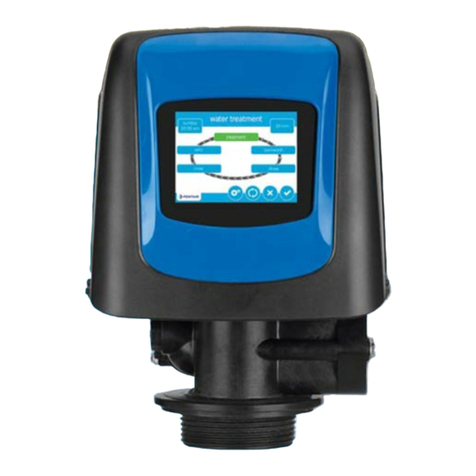
Pentair
Pentair Fleck 5800 XTR Installer manual

TII network technologies
TII network technologies 442 Installation note

Siemens
Siemens SINAMICS DCM 6RN Reference manual
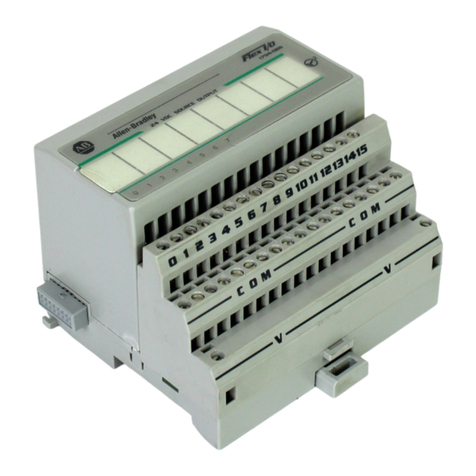
Allen-Bradley
Allen-Bradley FLEX I/O 1794-OB8 installation instructions
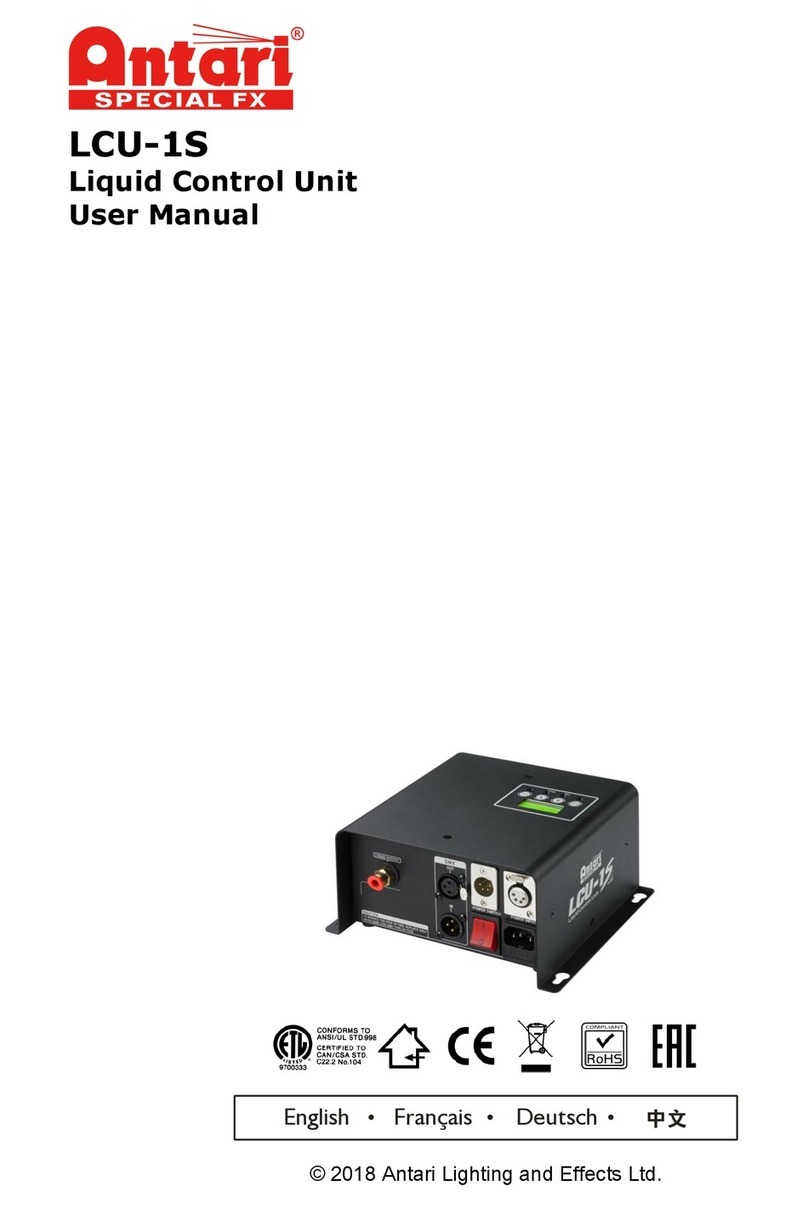
Antari
Antari LCU-1S user manual
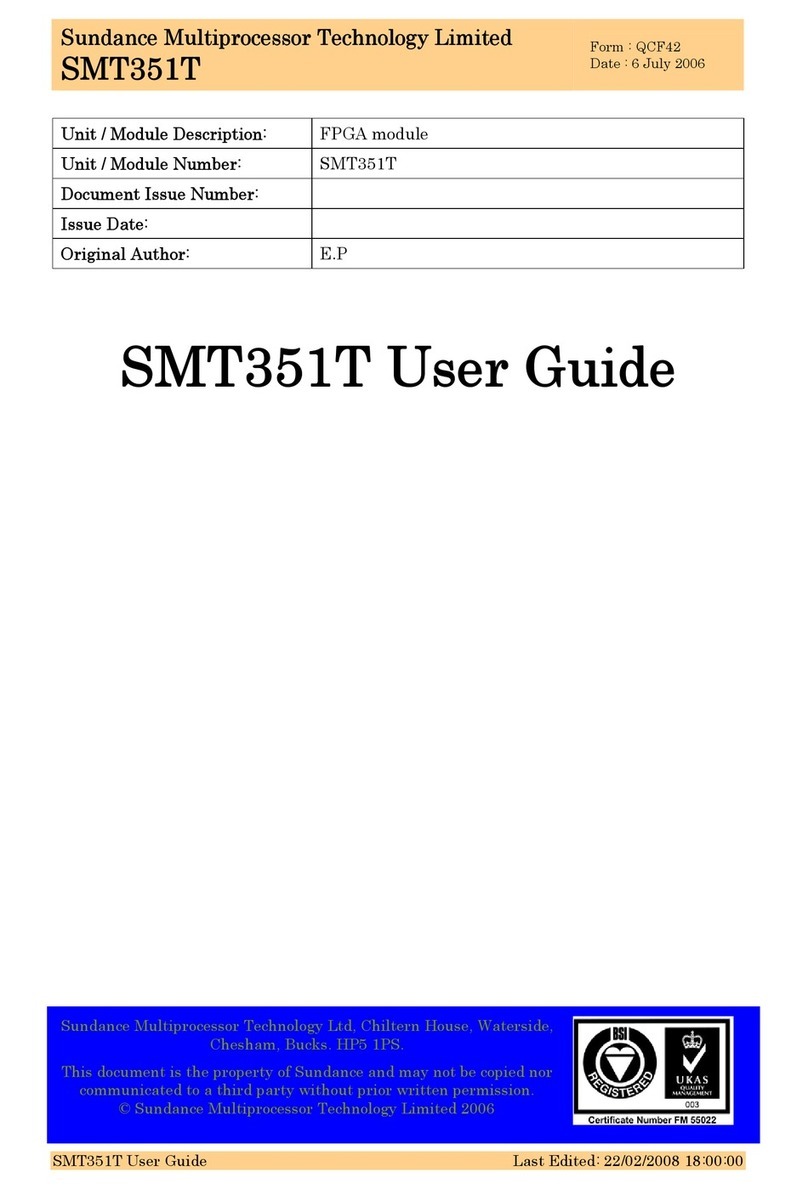
Sundance Technology
Sundance Technology SMT351T user guide

Nexa
Nexa ZRT-106 quick guide

Beko
Beko BEKOMAT 12 Instructions for installation and operation
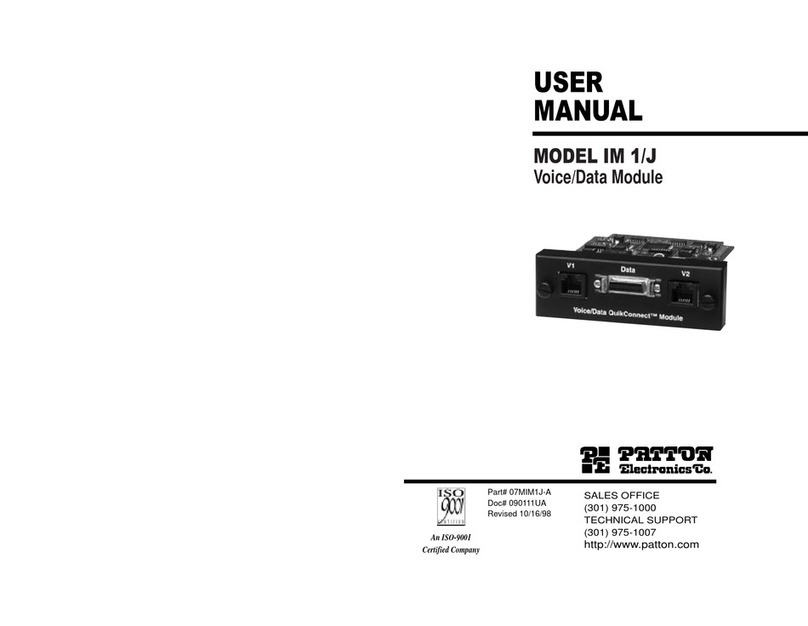
Patton electronics
Patton electronics IM 1/J user manual

VELAN
VELAN EE-1000 Maintenance manual
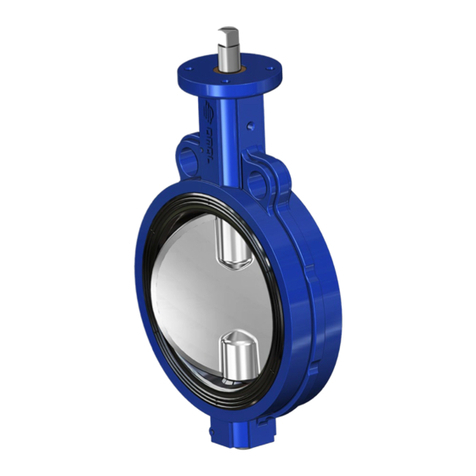
omal automation
omal automation 375 instruction manual
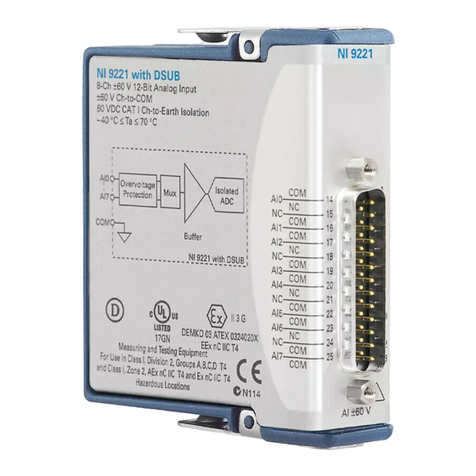
National Instruments
National Instruments NI 9221 Getting started guide


